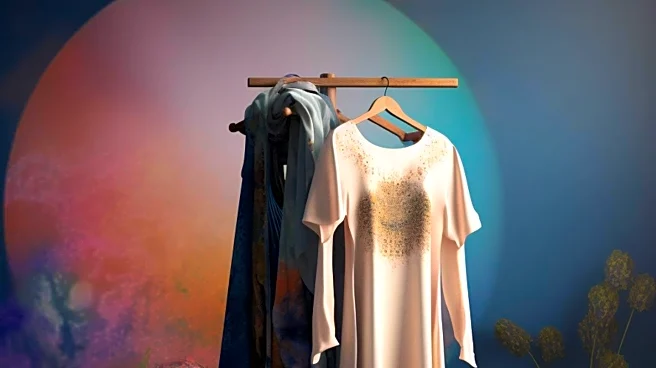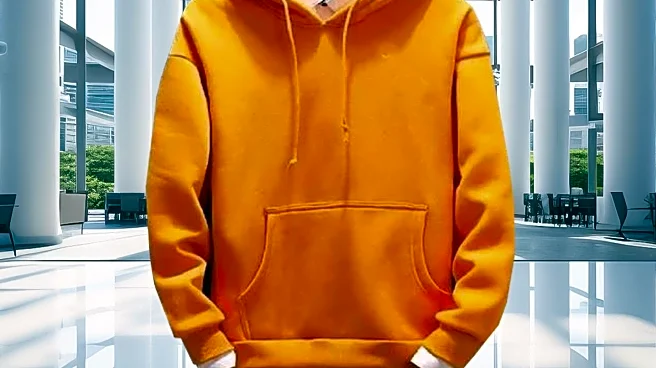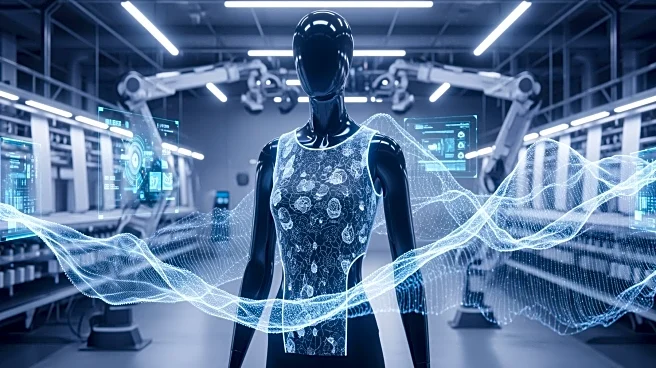What's Happening?
The fashion industry is undergoing a significant transformation through the integration of advanced technologies. These innovations include robot sewing machines, AI algorithms predicting style trends, and virtual twins that simulate garment behavior
in real-time. These technologies aim to tackle longstanding challenges such as overstock and high return rates. Virtual twins, for instance, allow designers to visualize and test designs before physical prototypes are made, reducing production time and waste. Automation and AI are streamlining workflows, enabling faster design iterations and data-driven decision-making. On-demand production facilitated by 3D design software is addressing over-production issues, while body scanning technology ensures customized fit, enhancing customer satisfaction and reducing returns.
Why It's Important?
The adoption of technology in the fashion industry is crucial for improving efficiency, sustainability, and creativity. By reducing waste and production time, these innovations contribute to more sustainable practices. The ability to predict trends and customize fit through AI and body scanning technology enhances consumer satisfaction and operational efficiency. This shift not only benefits fashion brands by streamlining processes but also aligns with growing consumer demand for personalized and sustainable products. As the industry evolves, these technologies are setting new standards for production and consumption, potentially leading to a more circular and environmentally friendly fashion ecosystem.
What's Next?
As technology continues to disrupt the apparel industry, fashion brands are likely to further integrate digital workflows and AI-powered tools. This could lead to more widespread adoption of on-demand production models, reducing reliance on physical samples and minimizing waste. The focus on personalized consumer experiences through body scanning and AI predictions may drive further innovation in product design and marketing strategies. Stakeholders, including designers, manufacturers, and consumers, are expected to benefit from these advancements, fostering a more sustainable and efficient industry.
Beyond the Headlines
The integration of technology in fashion raises ethical and cultural considerations, such as the impact on traditional craftsmanship and employment. As automation and AI become more prevalent, there may be shifts in job roles and skills required within the industry. Additionally, the emphasis on sustainability and personalization reflects broader societal trends towards environmental consciousness and individualism. These developments could influence consumer behavior and expectations, prompting brands to adapt to new market dynamics.













